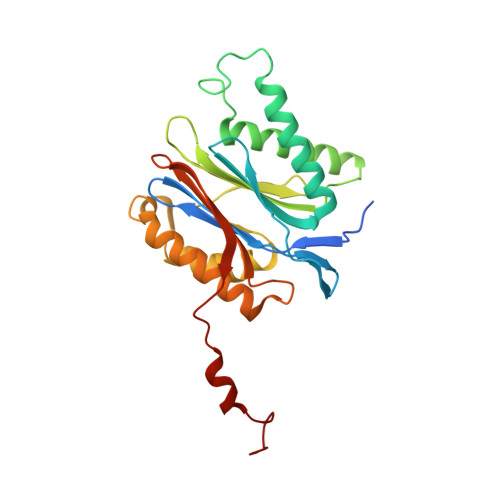A unified mechanism for proteolysis and autocatalytic activation in the 20S proteasome.
Huber, E.M., Heinemeyer, W., Li, X., Arendt, C.S., Hochstrasser, M., Groll, M.(2016) Nat Commun 7: 10900-10900
- PubMed: 26964885
- DOI: https://doi.org/10.1038/ncomms10900
- Primary Citation of Related Structures:
5CZ4, 5CZ5, 5CZ6, 5CZ7, 5CZ8, 5CZ9, 5CZA, 5D0S, 5D0T, 5D0V, 5D0W, 5D0X, 5D0Z, 5FG7, 5FG9, 5FGA, 5FGD, 5FGE, 5FGF, 5FGG, 5FGH, 5FGI, 5FHS - PubMed Abstract:
Biogenesis of the 20S proteasome is tightly regulated. The N-terminal propeptides protecting the active-site threonines are autocatalytically released only on completion of assembly. However, the trigger for the self-activation and the reason for the strict conservation of threonine as the active site nucleophile remain enigmatic. Here we use mutagenesis, X-ray crystallography and biochemical assays to suggest that Lys33 initiates nucleophilic attack of the propeptide by deprotonating the Thr1 hydroxyl group and that both residues together with Asp17 are part of a catalytic triad. Substitution of Thr1 by Cys disrupts the interaction with Lys33 and inactivates the proteasome. Although a Thr1Ser mutant is active, it is less efficient compared with wild type because of the unfavourable orientation of Ser1 towards incoming substrates. This work provides insights into the basic mechanism of proteolysis and propeptide autolysis, as well as the evolutionary pressures that drove the proteasome to become a threonine protease.
Organizational Affiliation:
Center for Integrated Protein Science at the Department Chemie, Lehrstuhl für Biochemie, Technische Universität München, Lichtenbergstrasse 4, 85747 Garching, Germany.

































